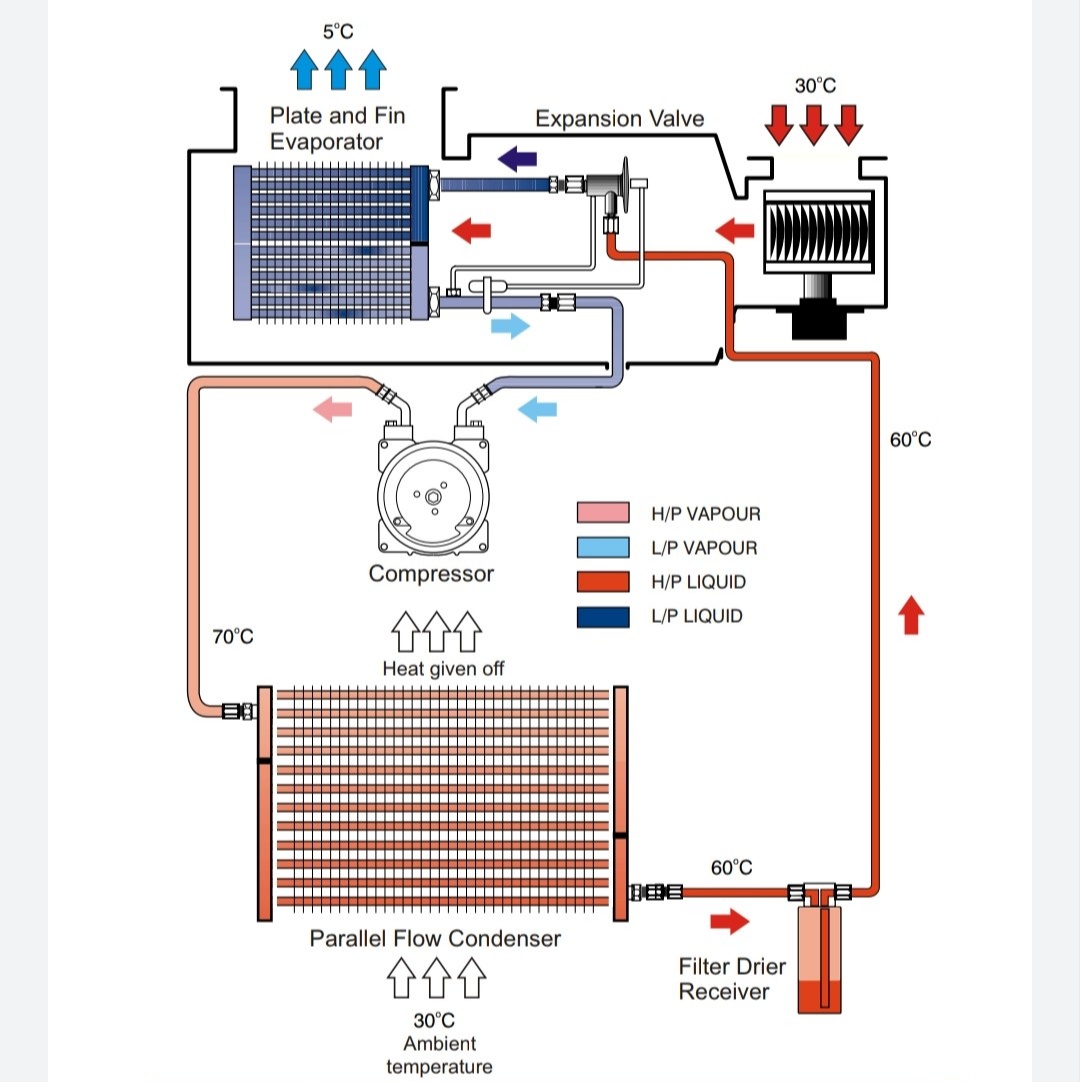Decoding Your Car's AC: A Comprehensive Guide to Auto Air Conditioning System Components
Sweltering summer heat making your drive unbearable? A properly functioning car air conditioning system is more than just a luxury; it’s essential for comfortable and safe driving, especially during hot weather. Understanding the key components of your vehicle's AC system can empower you to maintain it effectively and troubleshoot issues before they escalate.
The magic of a cool car interior relies on a sophisticated interplay of several auto air conditioning system parts. These components work in harmony, transforming hot, humid air into a refreshing breeze. But what are these vital parts, and how do they contribute to your driving comfort?
Imagine a cycle where refrigerant, a special fluid, continuously changes its state from liquid to gas and back again. This transformation is the heart of your AC's cooling power. The journey begins with the compressor, the powerhouse of the system, which pressurizes and circulates the refrigerant.
From the compressor, the high-pressure refrigerant travels to the condenser, located at the front of the vehicle. Think of the condenser as a radiator for your AC. It releases the heat absorbed from the cabin, transforming the refrigerant from a hot gas back into a high-pressure liquid.
This high-pressure liquid refrigerant then passes through an expansion valve or orifice tube. This crucial component reduces the pressure of the refrigerant, causing it to cool down significantly and partially turn back into a gas. This cool, low-pressure refrigerant then enters the evaporator, a component located inside the dashboard.
A brief history lesson reveals that automotive air conditioning wasn't always commonplace. The first systems appeared in the late 1930s, but widespread adoption didn't occur until decades later. Early systems were bulky, expensive, and often unreliable. Today's systems are far more compact, efficient, and integrated into the vehicle's overall design.
The significance of a well-maintained car AC system extends beyond mere comfort. A properly functioning AC can improve driver alertness and reduce fatigue, particularly during long drives in hot weather. It can also help prevent the buildup of humidity inside the car, which can fog windows and create a safety hazard.
One common issue with auto air conditioning systems is refrigerant leaks. These leaks can occur in various parts of the system, including hoses, connections, and even the compressor itself. Regular inspections and maintenance can help prevent leaks and ensure the system operates at peak efficiency.
Benefits of properly maintained auto AC system components include improved fuel efficiency, as a stressed system can put strain on the engine. A well-maintained system also helps maintain the resale value of your vehicle, showcasing it as well-cared-for. And, of course, a comfortable driving experience contributes to reduced stress and an enjoyable journey.
Advantages and Disadvantages of Common Auto AC Components
| Component | Advantages | Disadvantages |
|---|---|---|
| Compressor | Essential for system operation, pressurizes refrigerant | Can be expensive to replace, prone to wear and tear |
| Condenser | Efficiently removes heat from refrigerant | Susceptible to damage from road debris |
| Evaporator | Absorbs heat from cabin air, providing cooling | Can develop leaks, leading to reduced cooling performance |
Best practices for maintaining your car's AC include regular inspections, checking for leaks, and ensuring the correct refrigerant levels. You should also replace the cabin air filter periodically to improve air quality and prevent the system from overworking. Finally, running the AC for a few minutes each month, even during colder seasons, can help lubricate the system and prevent seals from drying out.
Frequently Asked Questions:
1. Why is my AC blowing warm air? This could be due to low refrigerant, a faulty compressor, or a blocked condenser.
2. How often should I recharge my AC? Consult your vehicle's owner's manual for recommended service intervals.
3. What is the role of the receiver/dryer? It removes moisture and contaminants from the refrigerant.
4. Can I add refrigerant myself? While possible, it's best to have a certified technician handle refrigerant.
5. How can I tell if my compressor is bad? Unusual noises, lack of cold air, and system leaks can indicate a failing compressor.
6. What causes AC system leaks? Leaks can be caused by wear and tear, corrosion, or damage from road debris.
7. How much does it cost to repair an auto AC system? Costs vary depending on the nature of the repair.
8. What is the purpose of the expansion valve? It regulates the flow of refrigerant into the evaporator.
In conclusion, the auto air conditioning system, comprised of interconnected auto AC system components, plays a vital role in ensuring a comfortable and safe driving environment. From the compressor to the evaporator, each component contributes to the complex process of cooling the cabin air. Understanding the function of these parts, coupled with regular maintenance, can help you keep your car's AC running smoothly for years to come. Don't let the summer heat get the best of you; invest in the upkeep of your car's AC system and enjoy a cool, comfortable ride every time you hit the road. A proactive approach to maintenance will not only save you money on costly repairs in the long run but also ensure a more pleasant and safer driving experience.
Decoding wing tais share price a deep dive
What is greeces national animal unraveling the mythical symbol
Quest diagnostics palm beach county














